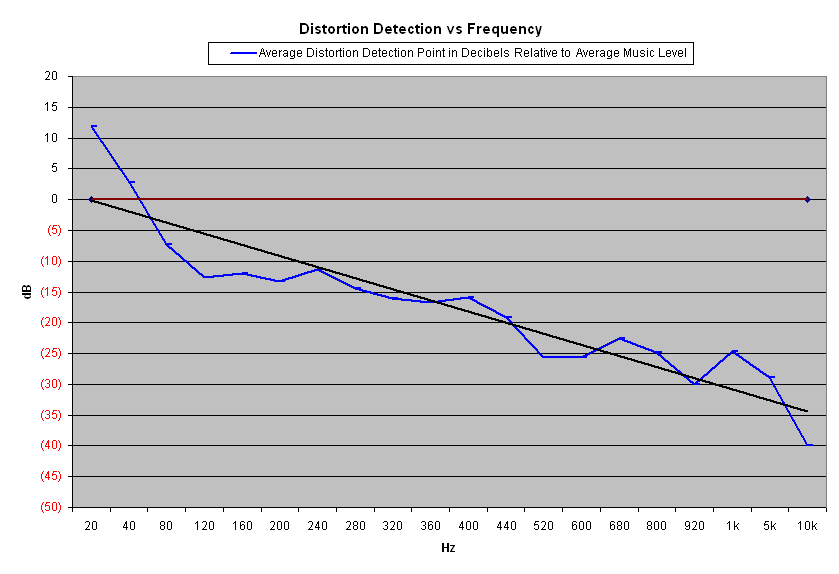- Thread Starter
- #21
Real world music listening would be 100db peaks
With movies, and some music genres like classical and EDM, 110db peaks. Redo measurements on your speakers for that
Ah, yes, here is noise spectrum display:
Real world music listening would be 100db peaks
With movies, and some music genres like classical and EDM, 110db peaks. Redo measurements on your speakers for that
OP should to take a look at the REW Help file. In the PDF version starting on page 105, there is an example of measuring loudspeaker distortion. The example talked about the artifacts of normalization (page 107) which can make normalized distortion plots misleading. Also, to minimize non-anechoic room effects, measurements should be taken close to the loudspeaker instead of at listening position. In the example the measurements were taken only 15 cm from the loudspeakers.
OP should to take a look at the REW Help file. In the PDF version starting on page 105, there is an example of measuring loudspeaker distortion. The example talked about the artifacts of normalization (page 107) which can make normalized distortion plots misleading. Also, to minimize non-anechoic room effects, measurements should be taken close to the loudspeaker instead of at listening position. In the example the measurements were taken only 15 cm from the loudspeakers.
I assume you're asking for the differences between stepped sine versus a sine sweep.Btw, can you explain the difference when measuring distortion with RTA?
P.S. I cannot use stepped sine as I'm using Volumio so I cannot play stepped sine from my notebook - I need a file to play it.
I assume you're asking for the differences between stepped sine versus a sine sweep.
Sine sweep can get you the results much faster than stepped sine. The sine sweep test signal contains all the frequencies continuously from the start frequency to the end frequency. Thus, you can get the distortion levels for all the frequencies in the sweep. For stepped sine, you measure one frequency at a time, and will take a much longer time to measure the full frequency range. The advantage of stepped sine is better signal to noise ratio, which will let you measure distortions to a lower level, especially at the higher frequencies. You can do multiple sine sweeps and average the results to get better SN ratio too, but I don't know if REW has that capability.
If you need help falling asleep at night, you can try reading Professor Farina's paper on his sine sweep method.
Single sine tone is a single step sine?
Another thing about low frequency resonance is that resonance takes at least a few waves to fully build. For 76 Hz, the period is ~13 ms, and so it will take probably at least 50 - 100 ms for the resonance mode to fully build. If the sweep speed is too fast, the resonance mode may not have the chance to fully grown.Thank you for the reply, but I was actually asking for the differences between sine sweep and RTA single sine tone measurement. As you can see RTA single sine tone gave me smaller distortion figures and was better in identifyng cabinet resonance that occurs around 76Hz.
Another thing about low frequency resonance is that resonance takes at least a few waves to fully build. For 76 Hz, the period is ~13 ms, and so it will take probably at least 50 - 100 ms for the resonance mode to fully build. If the sweep speed is too fast, the resonance mode may not have the chance to fully grown.
Only if you want to measure distortion.That is probbly the reason why help suggests to use 1M sweep.
When doing RTA sine tone measurements do I also have to do it from 15cm?
Only if you want to measure distortion.
Axiom Audio’s small human trial resulted in this:I kinda wish THD+N went through DBT proof tests for the ones who tout audability or assume blindly that over 1% is audible. Is just them hearing stubile details in their music or placebo effect. The ER4PT i had was 0.7% at 1k with bass being 0,5% yet sounded great.

With single sine waves I noticed I can spot 1% at pretty much all frequencies, 0.5% only with higher frequencies (1kHz+) and 0.2% sounded clean to me at the entire range. Obviously it gets much harder to spot distrotion with music due to masking.Axiom Audio’s small human trial resulted in this:

It is said that woofers will distort more than the microphone and that may be so but I have not seen hard data for that either.
That's simply untrue for actual measurement equipments. They can easily go into sub 0.03% range. And even lower as I have never measured better headphones/earphones. Lowest single frequency distortion I have ever measured at relatively low level: 0.005%. Piston type mic/transducer is very accurate and low in distortion. At higher level, electrostatic are great from low to high and planars are great for some frequencies. They can easily go into 0.03% range. The limitations would be the high voltage electrostatic amplifier.In headphone distortion tests I have done, all the distortion is from the measurement mic, and not much from the headphones! Measurement mics are rated up to 3% distortion. Indeed finding distortion specs even for high-end microphones is hard. It is said that woofers will distort more than the microphone and that may be so but I have not seen hard data for that either.
